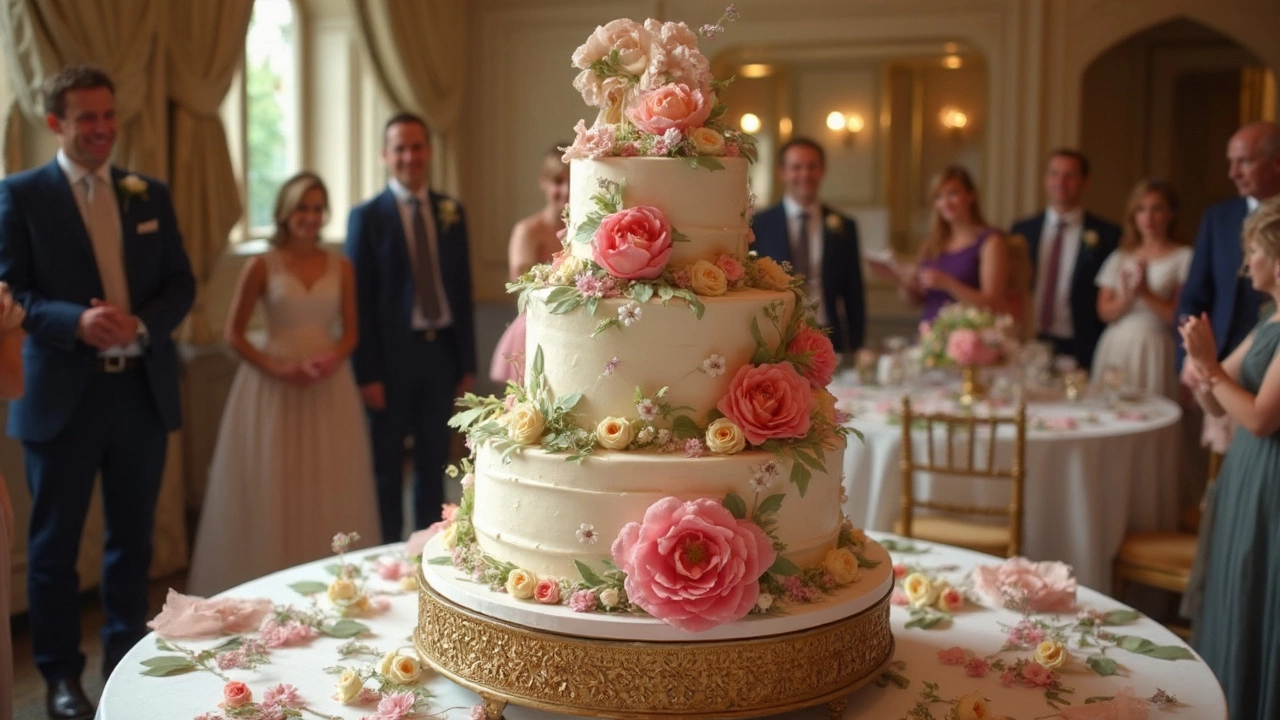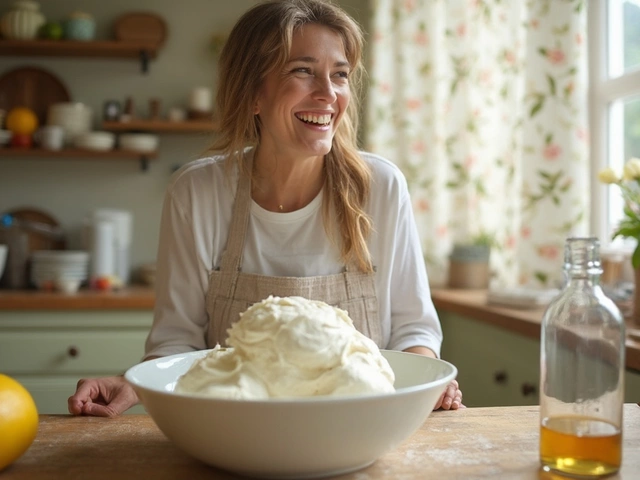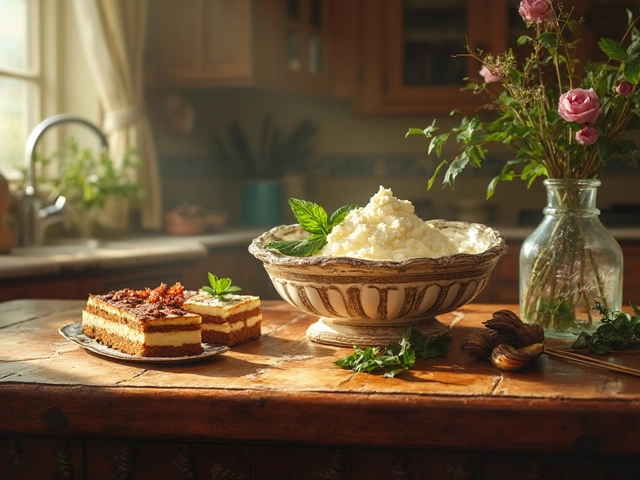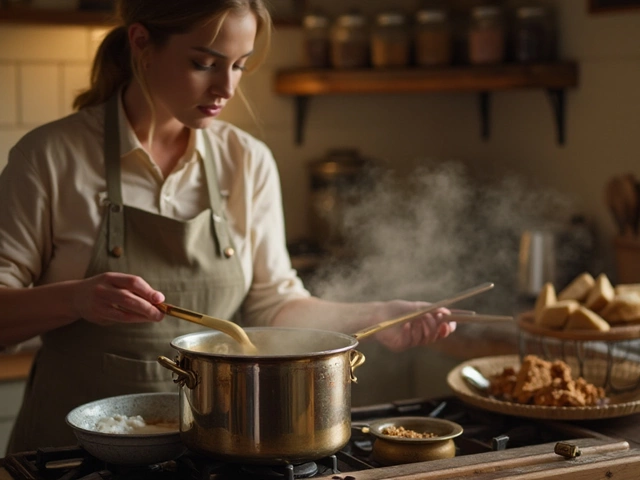Heard the term “dummy cake” before? That’s what most bakers and event planners call fake cakes. Basically, they’re cakes made to look real but they’re not edible at all. Instead of sponges and fillings, you’ll find styrofoam or polystyrene inside, covered up with real icing or fondant. They’re everywhere—wedding expos, display windows, and even those jaw-dropping cake competitions on TV.
Why go fake? For one thing, dummy cakes don’t melt, sag, or get stale. If you want a showstopper centerpiece that lasts all day (or all week), they just make sense. You can practice new decorating techniques on them again and again—which means no wasted ingredients. Plus, they’re a money-saver for photo shoots where nobody’s going to take a bite anyway.
- What Are Fake Cakes Really Called?
- Why Do People Use Dummy Cakes?
- Materials and How They’re Made
- Decorating a Dummy Cake Like a Pro
- Tricks for Using Fake Cakes at Events
What Are Fake Cakes Really Called?
In the baking world, fake cakes almost always go by the name dummy cakes. The word “dummy” really sticks because it tells you right away—this cake is just for show. You’ll also hear people call them display cakes, styrofoam cakes, or sometimes even practice cakes when you’re hanging around cake decorators. But the most common term you’ll spot is “dummy cake.”
Dummy cakes have one job—to look exactly like a real, frosted cake. They don’t have to taste good, just fool the eye. You’ll find these in bakery windows, at expos, and especially at weddings where couples want a grand cake but only need a small piece for the tradition and photos.
Curious about what these cakes are made of? The core is most often styrofoam because it’s lightweight and easy to cut or shape. Occasionally, decorators use plastic or wood if they want extra stability, but styrofoam is pretty much the standard.
- Dummy cakes = most-used name (search this if you shop for them online)
- Display cakes = usually for bakery windows or big events
- Styrofoam cakes = all about the material inside
- Practice cakes = for cake artists to build skills without wasting cake
Fun fact—according to decorators, using fake cakes in wedding planning can save up to 30% on the display cake’s cost because bakers only need to make a small edible tier for the cutting moment.
| Term | Where You’ll Hear It |
|---|---|
| Dummy Cake | Bakeries, Cake Supply Stores, Online Shops |
| Display Cake | Wedding Expos, Shop Windows |
| Practice Cake | Cake Decorating Classes |
| Styrofoam Cake | Craft Stores, Cake DIY Blogs |
Why Do People Use Dummy Cakes?
It’s wild how many creative ways people put dummy cakes to work. The main draw: they look just like real cakes, but don’t come with the headaches of baking, melting, or keeping food fresh. Here’s why bakers, decorators, and event planners reach for fake cakes so often:
- Display Magic: Think about bridal shows, bakery windows, or food fairs. A stunning fake cake can sit there for days without sagging or spoiling. Cake decorators love them as living ads—no worries about heat, humidity, or frosting disasters taking things south mid-event.
- Cheaper Photoshoots: If you don't need anyone eating the cake, why spend time and ingredients baking a real one? Dummy cakes are a go-to for food photographers and magazine shoots. Plus, you can reuse the same fake cake for dozens of different shoots—just scrape off the old icing and get creative again.
- No-Waste Practice: Beginners and pros alike use dummy cakes to practice decorating. You can slice, stack, layer, and pipe your heart out without tossing a pile of stale cake at the end.
- Massive Tiers, Lower Cost: Ever see a wedding cake that’s five or six tiers high? More than half the time, the bottom layers are just dummy cakes—no one misses out on dessert, and the couple doesn’t have to fork over a fortune for that dramatic look.
- Allergy & Safety Workarounds: At allergy-friendly or straight-up outdoor events, fake cakes offer display wow-factor without the risk of melting, bugs, or contamination.
Check out how often venues feature dummy cakes versus real ones for big events:
| Event Type | Dummy Cake Usage |
|---|---|
| Wedding Receptions | About 50% |
| Bakery Displays | Nearly 100% |
| Food Photoshoots | 80%+ |
So, whether it’s saving money, keeping things mess-free, or nailing that perfect Instagram shot, dummy cakes keep popping up wherever cake is the star of the show.
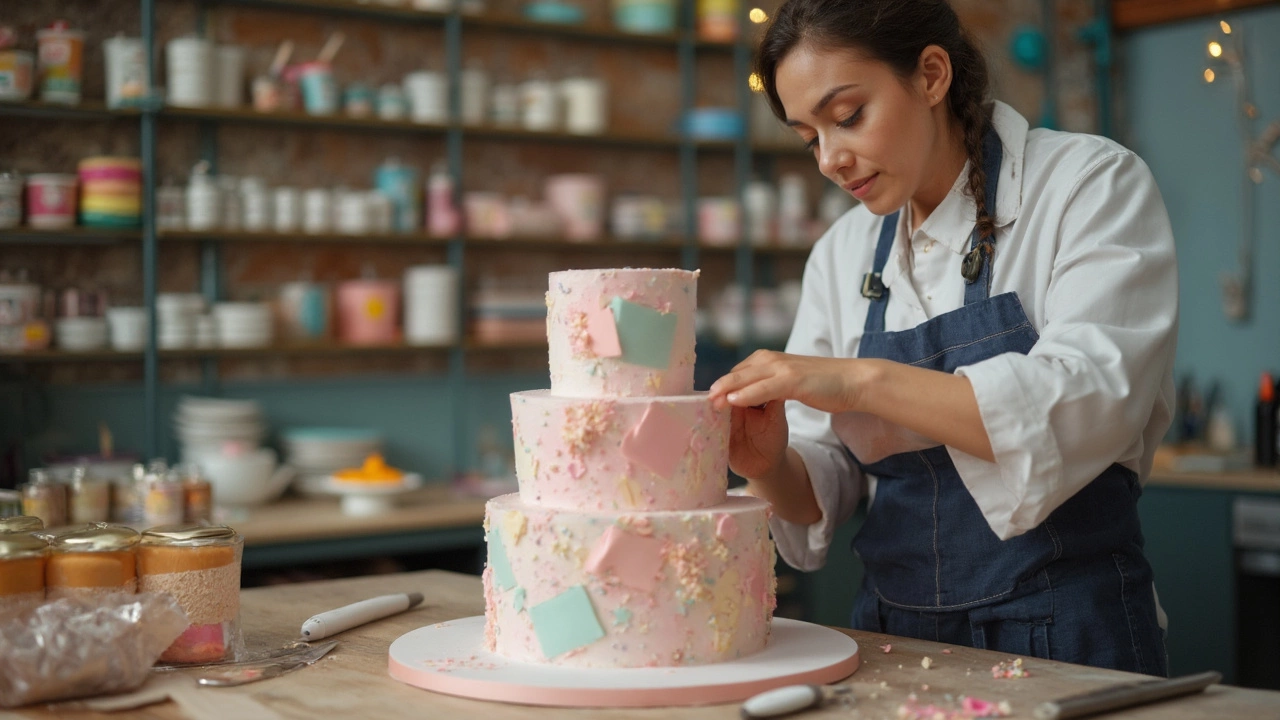
Materials and How They’re Made
The heart of a fake cake is literally not cake at all—it’s usually a block of food-safe styrofoam or polystyrene. These materials are lightweight, easy to carve into any shape or tier, and won't break the bank. The most common brands used by bakers line up with standard cake sizes—from 4-inch rounds to giant 16-inch tiers—so you can mix and match to look just like a real custom order.
The outside is where the real magic happens. Most dummy cakes get covered in actual fondant or buttercream—exactly what you'd find on an edible cake. Some decorators use royal icing, which dries super hard and lets you get crisp edges or detailed piping. For store displays, you might also see modeling chocolate or fake edible glazes to mimic the look of real pastries.
Here’s how a typical dummy cake comes together:
- Pick a foam base in the shape and size you want.
- Wipe the foam with a damp towel or wrap it lightly in plastic wrap if you plan to reuse it.
- Apply a thin layer of piping gel or buttercream to help the fondant stick. This also keeps the fondant from sliding off.
- Roll out fondant and drape it, smoothing gently like you would on an actual cake.
- Add details—like edible paint, piped decorations, or even fake fruit.
Some people ask how long a dummy cake lasts. Honestly, if you keep them away from direct heat and humidity, dummy cakes can last for years. Wedding shops have been known to reuse the same display cakes for season after season—all they have to do is switch up the outer decorations.
It helps to use food-safe supplies, even though no one’s eating the finished product. And yes, you can totally practice your decorating over and over—just strip off the old fondant, give the foam a quick clean, and start again. If you want to get really precise, here’s a quick table on what materials are most popular and what they’re good for:
| Material | Used For | Notes |
|---|---|---|
| Styrofoam | Most cake shapes | Cheap, lightweight, reusable |
| Polystyrene | Tall or sculpted cakes | Firm, holds structure better |
| Fondant | Exterior decoration | Super smooth, good for painting |
| Royal Icing | Piping/details | Dries hard, lasts long |
Decorating a Dummy Cake Like a Pro
You might think decorating a dummy cake is totally different from working with real cake, but honestly, the basics are almost the same. The main difference? You’re working with a solid surface—usually a styrofoam round or square—so there's no risk of crumbs messing up your fondant or buttercream. That’s why many bakers use dummy cakes for practicing piping, smoothing fondant, or perfecting tricky patterns.
Before you dig into decorating, you have to prep your fake cake. Start by wiping any styrofoam dust away. Some decorators rub the surface with a damp paper towel and let it dry. Next, cover the foam with a thin layer of piping gel or corn syrup—this helps fondant or icing actually stick. Don’t skip this step, or your pretty decorations might slide right off.
When you’re ready to decorate, follow these easy steps:
- Roll out your fondant about 1/8 inch thick. Drape it evenly over your dummy cake, smoothing down any wrinkles by hand or with a fondant smoother.
- If you’re using buttercream for practice, use a bench scraper to get super-smooth sides. Since the foam won’t absorb moisture, experiment with bold colors and patterns—no worrying about bleeding through the cake like you would with a real sponge.
- Add decorations like edible flowers, sugar pearls, or printed wafer paper. These can be attached with a dab of royal icing or piping gel.
- If you ever need to reuse your fake cake, just pop off the fondant layer, give the foam a quick wipe, and you’re ready to go again. Some bakers use the same foam base dozens of times, which saves a ton of money in the long run.
Want your dummy cake to look exactly like the real deal? Professional decorators sometimes paint on details with edible gel food colors, use edible gold leaf, or add stencils for crisp designs. For tall cakes seen at weddings or expos, people stack a mix of real and fake tiers—guests seriously can’t tell.
Here’s a quick look at popular materials and tools for decorating dummy cakes:
| Materials | Purpose |
|---|---|
| Styrofoam dummies | Main structure for fake cakes |
| Piping gel/corn syrup | Makes fondant or icing stick |
| Fondant/buttercream | Covers and decorates the surface |
| Bench scraper | Smooths icing perfectly |
| Edible paints/stencils | Adds custom details |
Using fake cakes for decorating practice isn’t just for pros. If you want to try a fancy wedding design, or just mess around with new piping tips, grab a dummy and go wild. You can always reuse it, and you never have to throw out cake you wouldn’t want to eat. That’s pretty sweet, right?

Tricks for Using Fake Cakes at Events
So you’ve got a fake cake or a set of dummy cakes and you want to show them off at your next event. How do you make sure nobody suspects a thing—or better yet, how can you use them to actually make your party or display run smoother?
One of the oldest tricks in the book is the cake switcheroo. There’s an eye-catching dummy cake out on display, looking perfect in photos, while slices of real cake are cut and served from the kitchen or a hidden layer. If you want guests to enjoy fresh, delicious cake, just have the real stuff pre-sliced and ready to go behind the scenes. This works especially well for tall wedding cakes where only the bottom tier is real for the cake-cutting moment.
- Hide a real tier: Some bakers place a real cake tier at the base of a fake cake so the couple can cut it for photos. The rest of the tiers? Complete dummies.
- Mix and match: It’s totally fine (and common) to combine dummy tiers and real ones in the same cake setup. This saves time, ingredients, and money.
- Reuse dummies: Since dummy cakes never go stale, you can reuse them. Just scrape off the old icing and redecorate for another event or get photos of different styles for your bakery’s portfolio.
- Secure your display: Attach dummy layers with a little royal icing to prevent “accidents”—nobody wants to see tiers topple over. Lightweight tiers can get wobbly, especially outdoors.
- Add weight if needed: Sometimes, dummy cakes are a bit too light, especially for display tables outdoors or at busy venues. Pop a bean bag or some marbles inside the base tier to help keep them steady.
If you want your fake cakes to fool all your guests, pay attention to little details. Real cake boards, fancy cake toppers, and piping around the base edge all scream “I’m the real deal.”
Still on the fence? Here’s a quick breakdown showing how dummy cakes stack up against real cakes for big events:
| Feature | Dummy Cakes | Real Cakes |
|---|---|---|
| Heat Resistance | High | Low |
| Reusable | Yes | No |
| Photo Friendly | Always | Varies |
Getting creative with fake cakes isn’t just practical—it can make your event feel a lot less stressful, while still looking picture-perfect. Next time someone asks if the cake is real, just smile and let them guess.

